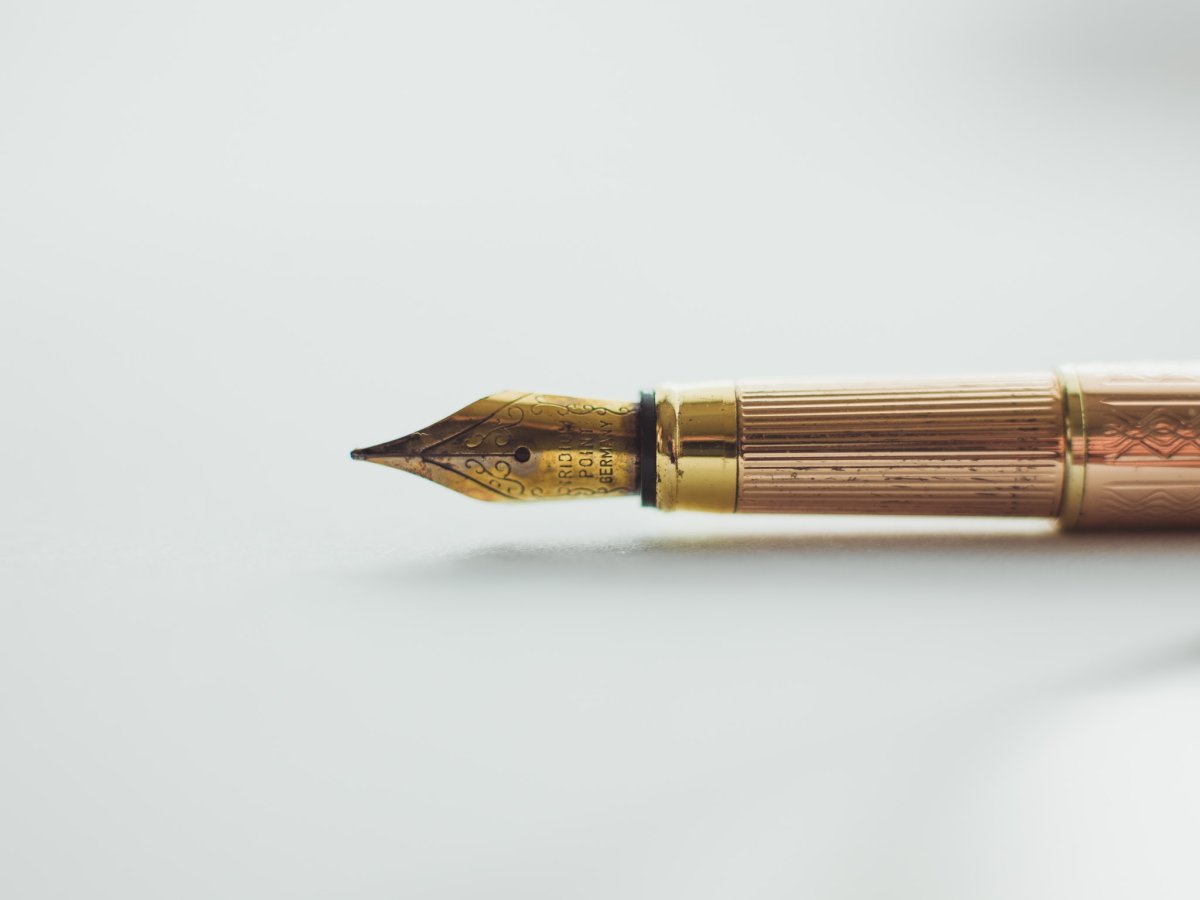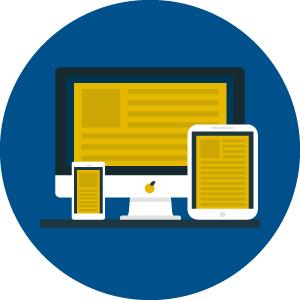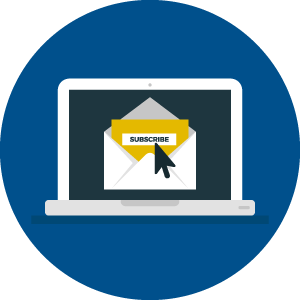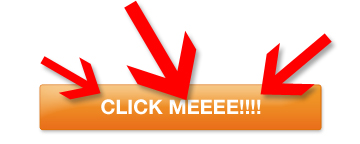
 A magazine sales letter full of content and detail works best for selling premium information products online. No matter how hard we try to make winners out of short sales letters (after all, they’re much less work!) we still see lots of long-form letter style magazine sales letters win A/B splits.
A magazine sales letter full of content and detail works best for selling premium information products online. No matter how hard we try to make winners out of short sales letters (after all, they’re much less work!) we still see lots of long-form letter style magazine sales letters win A/B splits.
One reason may very well be that we always add a quick sign-up form to the top of the sales letter. After all, if a reader wants to subscribe right away, who are we to make them scroll all the way to the bottom to sign up? However, if they want more information about what they’ll receive when they subscribe (especially if there are multiple bundles offered), the more copy the better. At least then they’ll find every answer they want to ask before they make a purchase decision.
In his textbook, Introduction to Online Journalism, Dr. Roland De Wolk says it is important to keep in mind the following considerations when writing subscription marketing copy online:
- People do not read carefully online, they scan. If it takes too long to find what they want, they leave.
- “Too long” is a matter of seconds, not of minutes or of word counts. Chances they will stay on one page for more than 60 seconds are remote. The remote control is essentially the same as a computer mouse. People will move on fast unless captured by a story.
- People use the web for information. Therefore it must be a quick, pleasant and useful task.
- Bulleted lists and other clear graphic elements are essential for conveying information quickly.
- Writing in brief, bright bursts of light works best.
- Visuals need to be connected to the story. The image must fit the words or the brain rejects the words.
- Always edit, edit, edit. Re-tell the main point of the paragraph, story or page in one sentence.
- The writing toward the end of each document or page should read like the end of a movie scene—it should lead the reader on.
Finally, keep design in mind. The focus of a magazine sales letter is the copy, but images of your magazine and beautiful visuals from past issues will help.
Here are a few more ways to write a magazine sales letter that … well, SELLS!
[text_ad]
Write a great headline.
 Great magazine sales letter headline is really an advertisement for an advertisement. It grabs the reader’s attention with such force that they can’t resist reading the next sentence.
Great magazine sales letter headline is really an advertisement for an advertisement. It grabs the reader’s attention with such force that they can’t resist reading the next sentence.
It may seem hard to believe, but far too many sales letter landing pages fail almost immediately by offering up lackluster headlines and subheads. Think benefits when putting up your headlines, not features.
The visitor who’s reading your magazine sales letter landing page wants nothing more than the answer to this question: “What’s in this for me?” Answer that question well and you will make a sale.
We are fans of the Big Promise headline archetype. It says, “We know who you are, we know what your pain is, and if you subscribe to this magazine, we promise to make your pain go away.” The Big Promise headline works for a variety of “pain” and “solution” products, whether the customer wants to grow a better garden, keep a fashionable home, or lose weight with better recipes.
- Feed your family all year with fresh produce from your garden with a 12-month subscription to Gardening Magazine.
- Bring the star dish to every cookout this summer when you subscribe to Cooking Magazine.
- Enjoy all you love about living in the West with our special offer from Regional Magazine.
And sure, you can tag on the “Just $1 an issue!” for sizzle.
Write a great lead.
 “Travel back in time to experience the people, places and artifacts of the ancient Biblical world without leaving your chair.” Doesn’t that sound like a nice headline for a salesletter for a magazine like Biblical Archaeology Review?
“Travel back in time to experience the people, places and artifacts of the ancient Biblical world without leaving your chair.” Doesn’t that sound like a nice headline for a salesletter for a magazine like Biblical Archaeology Review?
Make sure your landing page contains an interesting, engaging, believable story told by someone your audience can relate to and appreciate.
Even great products seldom stand on their own or sell themselves without someone creating a story. A great landing page is a sales letter that begins with a story that heightens desire for the product and prompts a purchase decision.
After all, you’re asking them to spend their valuable time reading your pitch … you owe them a good narrative. Plus, a compelling story will move them smoothly along to the purchasing decision.
Include benefits.
Every good sales letter has a list of benefits. For a magazine, this might include the special editions that come out every year. It may be the number of articles on a specific popular topic, or the number of interviews in an annual subscription. Use a bulleted list near the top of your magazine sales letter before deep diving into the details.
Write in clear language.
 Clear language and proper grammar are part of good storytelling in any promotional effort, and so is telling the truth. Don’t try to bamboozle your prospect with tired ad copy cliches.
Clear language and proper grammar are part of good storytelling in any promotional effort, and so is telling the truth. Don’t try to bamboozle your prospect with tired ad copy cliches.
Have you ever seen a sales letter that included a bulleted list of items … and the last item in the list said, “and much, much more?” Well, nobody with an IQ higher than room temperature believes there is “much, much more.” If you actually have more benefits or features, put them in the list. If you can’t describe its features and write glowingly about their benefits, you can’t sell it effectively.
Some tips on labeling and language:
- Write for the reader.
- Break up long copy with sub-headlines.
- Use power words to create excitement and urgency.
- Avoid using jargon and terms not commonly understood by the user.
- Proofread for errors.
Good writing is consistent in the use of spelling, abbreviation, terminology, grammar and punctuation. Consistency matters. Inconsistency confuses readers and makes you look uncertain of what you’re doing. Words drive the brain. Good copywriting compels the reader to take action. Form follows function.
Explain pricing packages.

An all-access membership sells best, but explaining how people can buy the print edition, or the digital edition, or the library, or all of the above for one price is essential to build in the value for your pitch.
Alongside the price, there is simply no substitute in subscription marketing for describing a great product that delights customers by engaging them repeatedly with topical content that enlightens and entertains. The best new digital magazines we’ve seen do all of that and more. A well constructed digital media library and companion marketing program can rapidly build a new base of loyal premium subscribers and generate high marginal profits for its owner.
Running a magazine without a library or magazine subscription website is like running a restaurant without offering apps or desserts. No restaurant survives on main dishes, it makes its margins on the extras. If you can build an archive of old issues once, it takes very little to keep it going, and can generate significant additional income every month.
When you have a print magazine, we suggest adding it to the list at the same price as your web magazine. When you have a library or magazine subscription website to bundle, you increase revenue from these packages, so extra effort should go into explaining the value of the archive.
Capture their email.
 Once you’ve captured your prospect’s interest, it’s important to keep your name in front of them.
Once you’ve captured your prospect’s interest, it’s important to keep your name in front of them.
During the orderflow for your magazine, include a checkbox that asks users if they want to subscribe to your email newsletter. This way, you can keep in contact with those who are clearly in your target audience.
Many of the publishers we see use their free-trial as an opportunity to catch those buyers. Anyone who signs up for a trial of the magazine is automatically signed up for their email newsletter (and it’s mentioned in the fine print). Buyers are more likely to buy again, so get them on your email list!
Create clickable calls to action.
 Order buttons may be the most fickle, but convincing item on a landing page. The difference in color or copy can either convince or turn away a potential customer or email subscriber.
Order buttons may be the most fickle, but convincing item on a landing page. The difference in color or copy can either convince or turn away a potential customer or email subscriber.
“Well-designed” is simply defined here as being understandable. They should look like a button and act like a button. They should have a roll-over state when someone puts the mouse on it, and the copy on the button should tell the user exactly what is about to happen.
Just like in a shopping cart where you hit the “checkout” button, the user should know if a button will bring them to “learn more” or if the button brings them directly to a payment gateway.
We find that using longer text on buttons leaves no room for confusion: “Yes, I want to buy [title]” continues to convert better than “buy now.”
Beyond these 7 steps, as with everything in marketing, we also believe that for each unique combination of product, buyer and the hundreds of different elements on the magazine sales letter that may cause them to buy or click away, the only sure way to increase landing page conversion rates is to test the variations and go with the winners.
What else would you add to this list? Let us know your internal magazine sales letter best practices in the comments.
[text_ad]


